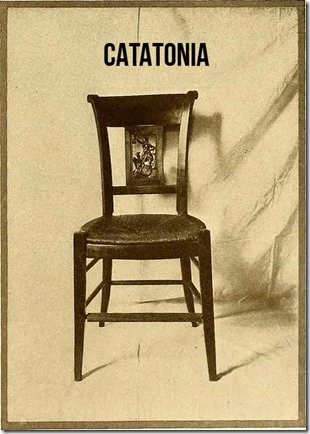 Catatonia is not a diagnosis, but a symptom of other diagnoses (e.g., depression, schizophrenia). It's characterized by unresponsiveness even when apparently awake. That, you probably knew. In the catatonia section of DSM-5 is a small flurry of vocabulary you probably don't already know. You don't have to know this vocabulary to consider yourself prepared for the social work licensing exam. It's not likely to be on the exam. It just might come in handy. Maybe.
Catatonia is not a diagnosis, but a symptom of other diagnoses (e.g., depression, schizophrenia). It's characterized by unresponsiveness even when apparently awake. That, you probably knew. In the catatonia section of DSM-5 is a small flurry of vocabulary you probably don't already know. You don't have to know this vocabulary to consider yourself prepared for the social work licensing exam. It's not likely to be on the exam. It just might come in handy. Maybe.
Here's a quick matching game to help you get it all-the-way learned. Your job: pair the symptom of catatonia with its description. To make it easier, you might consider quickly reading the list here before trying to do the matching. We were stumped by these here at SWTP HQ and we managed to get licensed. So, really, this is just an extra!
And...go!
Symptoms
1. Stupor
2. Catalepsy
3. Waxy flexibility
4. Mutism
5. Negativism
6. Posturing
7. Mannerism
8. Stereotypy
9. Echolalia
10. Echopraxia
Description
A. Slight, even resistance to positioning by examiner
B. Opposition or no response to instructions or external stimuli.
C. Mimicking another's speech.
D. Repetitive, abnormally frequent, non-goal-directed movements.
E. Spontaneous and active maintenance of a posture against gravity.
F. Mimicking another's movements.
G. Odd, circumstantial caricature of normal actions.
H. No psychomotor activity; not actively relating to the environment.
I. Passive induction of a posture held against gravity.
J. No, or very little, verbal response.
***
Answers are in comments.
How'd it go?
For more about catatonia, read up here:
For realistic, ASWB-exam-style questions (not just quick matching games) sign up for SWTP's full length practice tests!
July 26, 2016
Categories :

 Catatonia is not a diagnosis, but a symptom of other diagnoses (e.g., depression, schizophrenia). It's characterized by unresponsiveness even when apparently awake. That, you probably knew. In the catatonia section of DSM-5 is a small flurry of vocabulary you probably don't already know. You don't have to know this vocabulary to consider yourself prepared for the social work licensing exam. It's not likely to be on the exam. It just might come in handy. Maybe.
Catatonia is not a diagnosis, but a symptom of other diagnoses (e.g., depression, schizophrenia). It's characterized by unresponsiveness even when apparently awake. That, you probably knew. In the catatonia section of DSM-5 is a small flurry of vocabulary you probably don't already know. You don't have to know this vocabulary to consider yourself prepared for the social work licensing exam. It's not likely to be on the exam. It just might come in handy. Maybe.